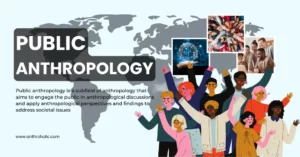AI Answer Evaluation Platform Live Now. Try Free Answer Evaluation Now
Structuralism
Structuralism, originally developed by anthropologist Claude Lévi-Strauss in the mid-20th century, revolutionized the way we understand culture, language, and society [1]. Grounded in the belief that human behavior and culture are comprehensible through the identification and interpretation of structural models, Structuralism has served as an intellectual approach with a profound impact across various academic disciplines. This article delves into the origins, principles, applications, and critiques of Structuralism.

The Genesis of Structuralism
- The Pioneer: Ferdinand de Saussure – Saussure, a Swiss linguist, laid the foundational concepts of Structuralism. He proposed that language is a system of signs, wherein each sign consists of a signifier (sound pattern) and a signified (concept). He stressed the arbitrary nature of these signs and the importance of their relational differences [2].
- Expansion by Claude Lévi-Strauss – Lévi-Strauss, a French anthropologist, extended Structuralism to anthropology. His studies on myths and kinship systems demonstrated how culture functions as a language. For Lévi-Strauss, the elements of culture acquire meaning not independently, but through their relations within a system [3].
Principles of Structuralism
Structuralism operates under several key principles:
- The Whole is Greater than the Sum of its Parts – Structuralism emphasizes that elements of a system can only be understood in relation to the whole structure.
- Binary Oppositions – Structuralism identifies binary oppositions (e.g., hot/cold, male/female) as fundamental organizers of structure.
- Arbitrariness of Signs – Structuralism maintains that the relationship between signifier and signified is arbitrary.
- Synchronic Approach – Structuralism focuses on studying phenomena at a single point in time rather than tracing their historical evolution.
Applications of Structuralism
- Linguistics – Structural linguistics focuses on underlying structures in language, seeing it as a system of differential signs.
- Anthropology – Structural anthropology seeks to decode the “unconscious” structures that shape human behavior and culture.
- Literary Criticism – Structuralist criticism analyzes literature as a system of signs, with meaning generated by structural relationships.
| Discipline | Key Figure | Application of Structuralism |
|---|---|---|
| Linguistics | Ferdinand de Saussure | Analyzing language as a system of signs |
| Anthropology | Claude Lévi-Strauss | Unveiling the structures shaping culture |
| Literary Criticism | Roland Barthes | Decoding literature through structural relations |
Criticisms of Structuralism
While Structuralism has greatly contributed to various fields, it has also encountered several criticisms [4]:
- Ignoring Human Agency – Critics argue that Structuralism’s focus on overarching structures reduces individuals to mere products of these structures, overlooking their ability to act and influence the system.
- Overemphasis on Binary Oppositions – Critics contend that the binary logic of Structuralism oversimplifies complex realities.
- Neglecting Historical Context – By adopting a synchronic approach, critics suggest that Structuralism fails to consider the historical and dynamic nature of cultural and social phenomena.
Structuralism in Psychoanalysis
- Jacques Lacan – This French psychoanalyst built on Freud’s work, weaving together psychoanalysis and Structuralism. Lacan proposed that the unconscious is structured like a language, signifying that desires and fears are encoded in the same way as linguistic signs [5].
Structuralism in Art and Architecture
Structuralism is also applied in art and architecture, interpreting art as a language with its own grammar and rules:
- Art – Artworks are analyzed based on the structural relationships between their components rather than their individual elements. This approach is particularly effective in the analysis of abstract art, where the lack of real-world reference points shifts the focus to internal relations [6].
- Architecture – Structuralism in architecture emphasizes the understanding of structures and patterns that organize space. It tends towards modularity, repetition, and the creation of ‘collective’ spaces. The architectural style of Dutch architect Aldo van Eyck exemplifies this approach [7].
The Influence of Structuralism
Structuralism’s influence spans beyond academia to affect everyday life:
- Cultural Understanding – Structuralism provides a framework to understand and respect other cultures by focusing on the underlying structure of cultural phenomena.
- Social Structures – By studying social structures, policymakers can identify patterns and relationships that can help inform more effective policies.
- Communication – Structuralism’s focus on language and signs improves our understanding of how we communicate, informing fields like advertising and media.
Post-Structuralism: A Response
Post-Structuralism emerged as a response to Structuralism, critiquing its reliance on fixed structures. Prominent figures include Jacques Derrida, who introduced deconstruction, a method of reading and interpretation that questions the very possibility of a fixed structure or meaning [8].
Conclusion
Structuralism offers a unique lens for understanding human behavior, culture, and society, positing that meaning emerges from structural relations. Despite criticisms, it has significantly shaped various academic fields and continues to resonate in contemporary scholarship.
References
[1] Dosse, F. (1997). Empire of Meaning: The Humanization of the Social Sciences. University of Minnesota Press.
[2] Saussure, F. de. (1916). Course in General Linguistics. Open Court Publishing.
[3] Lévi-Strauss, C. (1963). Structural Anthropology. Basic Books.
[4] Eagleton, T. (2008). Literary Theory: An Introduction. University of Minnesota Press.
[5] Lacan, J. (2006). Écrits: The First Complete Edition in English. W. W. Norton & Company.
[6] Gant, D. (2002). Understanding Contemporary Art. McGraw-Hill.
[7] Frampton, K. (1995). Studies in Tectonic Culture: The Poetics of Construction in Nineteenth and Twentieth Century Architecture. The MIT Press.
[8] Culler, J. (2007). On Deconstruction: Theory and Criticism after Structuralism. Cornell University Press.




